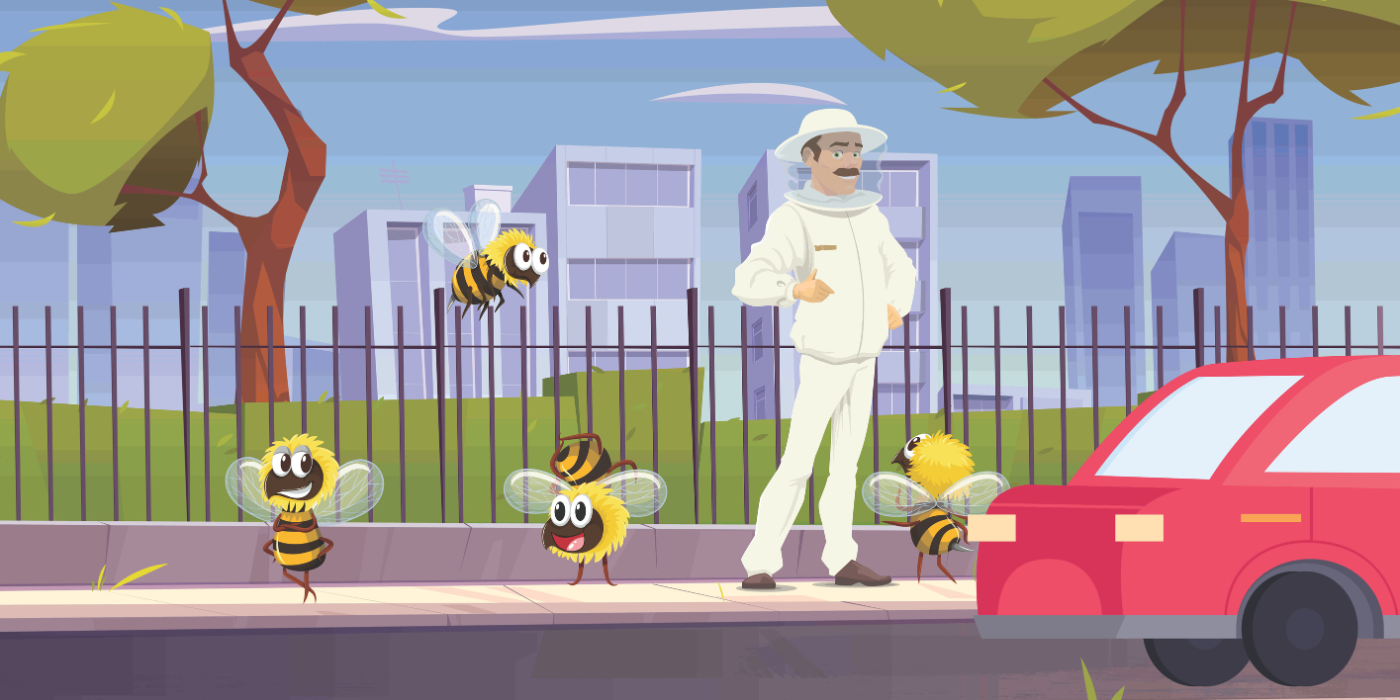
Urban Beekeeping Myths Debunked | What You Really Need to Know
Urban beekeeping has grown in popularity as more people recognize the importance of bees in pollination and biodiversity. However, despite its rise, misconceptions about keeping bees in cities persist. Some people believe that bees are too dangerous, that they need vast open fields to survive, or that city pollution ruins honey quality.
In reality, urban beekeeping is not only possible but also beneficial to both bees and city environments. In this blog, we’ll debunk the most common myths about keeping bees in cities and shed light on what you really need to know.
Myth 1: Cities Are Not Suitable for Beekeeping
The Truth: Cities can be an excellent environment for bees.
Many people assume that bees need the countryside to thrive. While it’s true that rural areas offer large-scale agriculture, urban environments provide an abundance of diverse nectar sources from parks, gardens, and balcony plants. Unlike monoculture farms that may have limited blooms, cities often have a continuous supply of flowers from different plants throughout the growing season.
Urban bees often have access to more diverse foraging options, making their honey richer in flavor and nutrients. Research has shown that urban colonies can sometimes be even more productive than rural ones due to the variety of available flowers and the absence of agricultural pesticides.
Myth 2: Beekeeping Will Make My Neighborhood Dangerous
The Truth: Honeybees are not aggressive unless provoked.
Many people worry that introducing hives to a neighborhood will lead to an increase in bee stings. However, honeybees are naturally docile and only sting when they feel threatened. Unlike wasps or hornets, they are not territorial about food sources and do not scavenge aggressively around human food.
Beekeepers also take precautions when managing hives. They place hives in strategic locations, maintain them regularly, and ensure that flight paths do not disrupt neighbors. Urban beekeeping has been successfully implemented in cities around the world, including London, New York, and Paris, with minimal incidents.
If you see a bee in your garden or on your balcony, it is simply foraging for nectar, not looking to attack.
Myth 3: City Pollution Ruins Honey Quality
The Truth: Urban honey is often just as pure—if not purer—than honey from rural areas.
One common misconception is that pollution in cities contaminates honey, making it unsafe to eat. However, bees have natural filtration systems that prevent harmful substances from entering their honey. Studies have found that urban honey often contains fewer pesticides and chemical residues than honey from commercial farming areas, where crops are sprayed with pesticides.
In fact, urban beekeeping reduces reliance on mass-produced honey, which is often blended from multiple sources and may contain additives. When properly maintained, city hives produce clean, natural honey with unique flavors influenced by diverse nectar sources.
Myth 4: Beekeeping Requires a Lot of Space
The Truth: You don’t need a large backyard or garden to keep bees.
Many urban beekeepers successfully maintain hives on rooftops, balconies, and even small community gardens. A beehive itself only takes up a small footprint, typically less than one square meter, making it suitable for tight urban spaces.
Cities around the world have embraced rooftop beekeeping, with major landmarks like the Paris Opera House, The Waldorf Astoria in New York, and Buckingham Palace supporting hives on their rooftops. As long as the bees have access to flowers and water, they can thrive in urban environments.
Myth 5: Bees Will Struggle to Find Food in the City
The Truth: Cities provide a variety of nectar sources throughout the seasons.
People often assume that bees need sprawling fields of wildflowers to survive. While countryside landscapes can be ideal, cities offer a wide range of flowering plants, including:
-
Parks and botanical gardens
-
Community and rooftop gardens
-
Balcony plants and flowering trees
-
Urban farming projects
Urban landscaping efforts and pollinator-friendly initiatives are increasing, meaning more nectar-rich plants are being introduced into cities. Bees are adaptable, and as long as there are flowers nearby, they will continue to collect nectar efficiently.
Myth 6: Beekeeping Is Too Difficult for Beginners
The Truth: Beekeeping requires learning, but it’s manageable with the right guidance.
While beekeeping does involve responsibility, it is not as complex as many people think. Many cities have beekeeping associations and mentorship programs that provide training and resources for beginners. There are also numerous online courses, books, and workshops available to help new beekeepers get started.
Key aspects of successful urban beekeeping include:
-
Understanding basic hive management
-
Regularly monitoring hive health
-
Providing water sources for bees
-
Educating neighbors about the benefits of urban beekeeping
With the right education and a commitment to responsible hive management, even beginners can successfully keep bees in an urban setting.
Myth 7: Urban Beekeeping Doesn’t Help the Environment
The Truth: Keeping bees in the city supports pollination and biodiversity.
Some people argue that urban beekeeping is more of a trend than a real environmental effort. However, honeybees play a crucial role in pollination, and cities need pollinators just as much as rural areas do.
Urban beekeeping:
-
Boosts pollination rates for community gardens, fruit trees, and flowering plants
-
Increases awareness about the importance of bees
-
Helps combat bee population decline caused by habitat loss and pesticides
By keeping hives responsibly, urban beekeepers contribute to the overall health of their local ecosystem.
Urban beekeeping is more than just a hobby—it’s a meaningful way to support biodiversity, enhance local food production, and educate communities about the importance of pollinators. By debunking these common myths, we can help more people understand that keeping bees in cities is both feasible and beneficial.
If you’re considering becoming an urban beekeeper, start by researching your local laws, connecting with beekeeping groups, and learning best practices. With the right knowledge and approach, you can contribute to a greener, more bee-friendly city.



Leave a comment